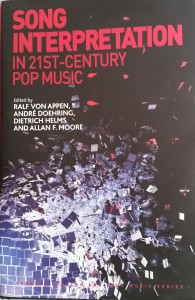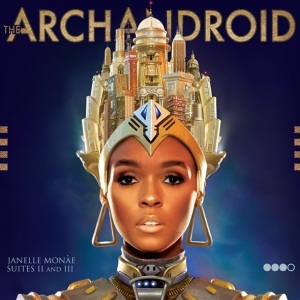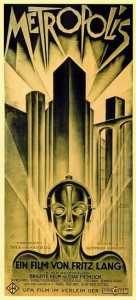The following discussion pertains mainly to Western popular music for reasons I hope to become apparent, mainly relating to the ways music becomes popular. Every region and country has its own popular musics and much of the below discussion, in general terms, applies to them as well, but for clarity of argument, my scope here is the Western popular music.
Why is popular music popular?
This might at first glance seem like a circular question, and in some ways it is. It is a different question than ‘What is popular music?’ The latter could be answered circularly: ‘Music that is popular.’
Let us start then with the notion of popularity. The dictionary definition of popularity is ‘the quality of being widely admired or accepted or sought after.’ The key word here is ‘widely’ as the quantitative term, while ‘admired,’ accepted,’ and ‘sought after’ are the qualities that are being measured.
In the field of music, we could think of e.g. The Beatles, Johann Sebastian Bach, and Miles Davis as being popular musicians by this definition. They represent different musical genres, but are all certainly ‘widely admired,’ ‘accepted,’ as well as ‘sought after.’ We can, however, immediately imagine that there would be different reasons for people to admire, accept, or seek after the music of these musicians. As they represent different musical genres – even traditions – we can imagine that people fond of these particular genres and traditions might admire, accept or seek after their music to varying degrees, based on their predilections. We can also make an educated guess that out of these artists, The Beatles is probably the most ‘widely admired or accepted or sought after.’ As musical genres go, the music of The Beatles is also probably recognised by most as ‘popular music.’
This late work of The Beatles is a fine example of popular music production. See the video description on YouTube for more.
Johann Sebastian Bach is in many ways a pivotal musician and composer in the development of Western classical music. Miles Davis is a central figure in the history of jazz. The same can be said of The Beatles pertaining to popular music. I.e. their musics meet the popularity criteria. However, we still wouldn’t call Bach’s or Miles Davis’ music popular music like we do the music of The Beatles.
Johann Sebastian Bach is generally recognised as the master of counterpoint and his music has since the early 19th century been essential learning material for any aspiring composer of Western art music.
Citing several music scholars, WikiPedia defines popular music as ‘music with wide appeal that is typically distributed to large audiences through the music industry’. This definition brings along another factor; distribution through the music industry. In Bach’s time, there obviously was no music industry and music was distributed through notations – printed or manuscripts – or by memorising, orally. When Miles Davis arrived at the New York jazz scene in the 1940s, there was already a music industry. Louis Armstrong, Duke Ellington, and many more jazz artists had already become popular music stars through radio and records. The Tin Pan Ally was producing popular music – the first ‘pop music’ – for people to bring home as sheet music and play themselves on their pianos at home, or perhaps even player pianos. For my previous discussions about jazz as popular music, see Black music – Part IIa and Black music – Part IIb.
The 50+ year career of Miles Davis during which he was always on top of the musical developments. The jazz tradition is largely based on playing the popular music of the time, and Davis revived that tradition in the 1980s.
What is popular music?
The quantitative part of the definition of popular music seems rather straightforward. ‘Wide appeal’ can be measured in terms of record sales, concert ticket sales, streamings, online views, etc. But how and why is this music reaching these numbers? Is it gaining popularity, ‘wide appeal,’ because it’s ‘good’ or because it’s promoted by the music industry? And does the music industry pick up this music to promote because it’s ‘good’ or for some other reason? How can you know someone’s music will have a wide appeal before anyone has heard it?
Popular music in this sense is a commodity to be sold on the market. Like other commodities, it is marketed and advertised to create a ‘wide appeal.’ That’s how this music is brought to the market for consumption. I.e. popular music can only exist through the music industry.
|
Browsing records
|
But aren’t all kinds of musics commodities? The music of Bach is still played in concerts, recorded, and sold as sheet music and more in modern formats. And all this is done through the music industry. The same can be said of the music of Miles Davis. The numbers, however, do not reach those of The Beatles or other popular music acts. I.e. their appeal is not as wide.
If the ‘wide appeal’ is created through the promotional activities of the music industry, why can’t they make more artists popular? We are approaching considerations of musical taste and aesthetics. More people like the music of The Beatles than that of Bach or Miles Davis, for various reasons. As mentioned, Bach represents the tradition of Western classical music and Miles Davis that of jazz and black American music in general. The Beatles, however, were one of the first groups to gain a mass following at the early stages of the development of something we now recognise as popular culture.
Technology
The music industry as a particular sector of economic production relies on particular technologies. The above-discussed musics mostly share the production technologies of musical instruments, recording and editing technologies, etc., as well as the technologies of reproduction (amplification in live events and at home). When it comes to marketing and advertising, however, popular music is found on ‘mass media’ – TV, radio, and Internet – in ways and volumes not available for other kinds of music. Mass media has been instrumental in the emergence of popular culture by disseminating ideas through movies, TV and radio programs, music, etc.
|
Mic
|
In Marxist analysis, these technologies would be the means of production of popular culture, including popular music. I.e. the music industry is the gatekeeper deciding whose music gets the chance to become popular. Of course, the Internet, mobile phones with cameras and microphones, and generally more affordable recording technology, have made it possible for more artists to get their art out to the public, bypassing the industry bottleneck. For anything to become truly popular, however, the more traditional forms – old, if you like – of mass media are required. Although many private productions ‘go viral’ on the Internet, they really only become popular – widely admired, accepted, and sought after – once the mass media picks them up and properly installs them into popular culture. Many of the things going viral are in fact first produced by the mass media, as they have realised the potential of short clips posted on the Internet.
I’ll leave it at this for now. Next time I’ll address popular music in terms of aesthetics.








